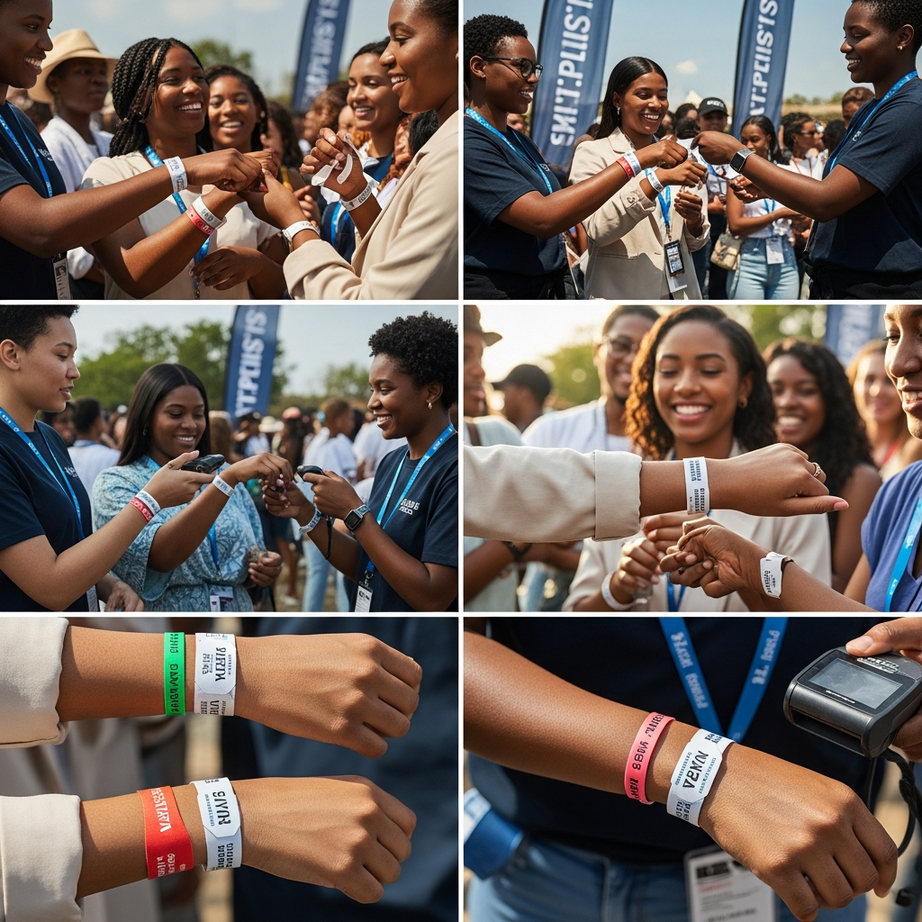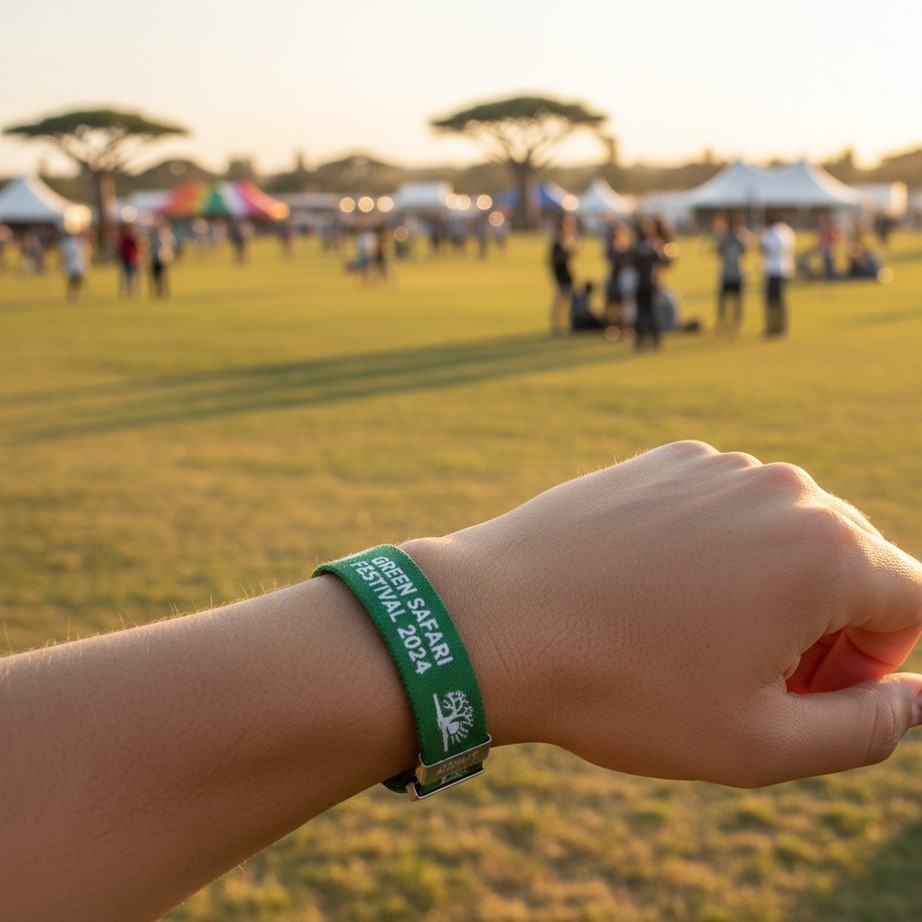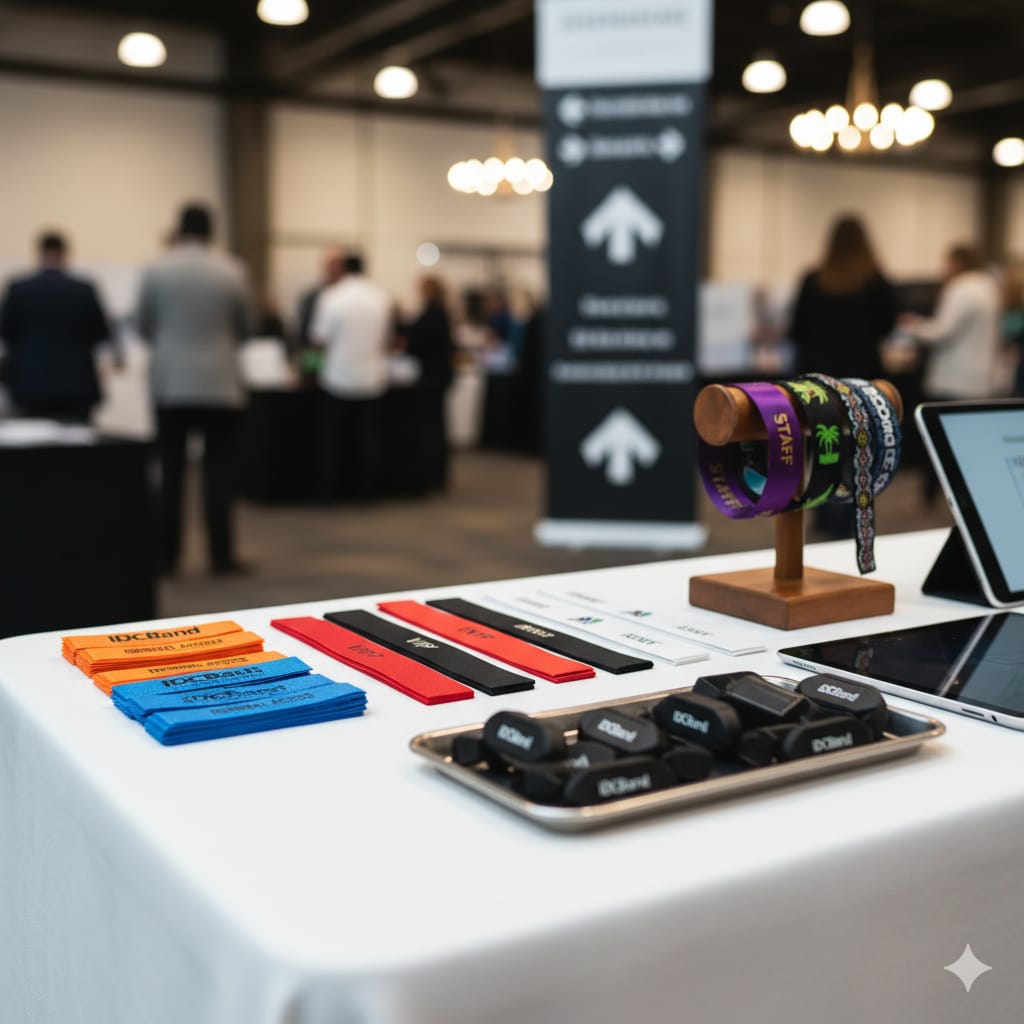What Is Tyvek and Where Does It Come From
Tyvek is a type of synthetic material made from high-density polyethylene fibres. These fibres are spun together using a special process that creates a fabric-like sheet. Although it looks and feels like paper, it performs more like a plastic. It is thin, strong, and resistant to water and tearing. This balance makes it well-suited for short-term use items that need to be durable without being expensive or bulky.
This material was originally developed for use in construction and packaging. Over time, people started using it for wristbands because of how well it stood up to wear and tear. It is light, flexible, and doesn’t irritate the skin, making it comfortable enough to wear all day.
The Unique Structure of Tyvek Material
Unlike traditional paper, Tyvek is made by flash spinning polyethylene into fine fibres. These fibres are then laid down in random patterns, which strengthens the material. The result is a sheet that has no grain, which means it does not rip easily in one direction like paper does. This makes Tyvek wristbands tougher than they look.
Because of the way the fibres are arranged, the material also allows for slight airflow while still being water resistant. That’s important for wristbands because they stay on the skin for hours, sometimes in hot or wet conditions. The material holds its shape without breaking down.
Why Tyvek Is Ideal for Wristbands
Tyvek is strong without being stiff. It’s waterproof, but it also breathes. It holds printed colours without smudging, and it can be cut cleanly into thin strips. This makes it perfect for wristbands that need to be worn at events, festivals, school functions or any place where people come and go.
Another reason it works well is because it’s inexpensive to produce and easy to recycle. So it ticks both the cost and environmental boxes for mass production.
Step One: Manufacturing the Tyvek Material
The Base Raw Material Used in Production
Everything starts with polyethylene pellets. These are small, white plastic beads made from petroleum-based raw materials. These pellets are melted down and turned into fibres during the production process.
The choice of polyethylene is deliberate. It creates fibres that are both soft and durable. This means the final product can be worn comfortably on the wrist while still being tough enough to survive sweat, friction, and rough handling.
How Polyethylene Fibres Are Spun
The melted polyethylene is pushed through small nozzles at high speed using a flash spinning process. This causes the material to form into very thin fibres. These fibres cool and settle into a random web as they land on a moving surface. Because the fibres are so fine and randomly laid, the material forms a consistent, smooth sheet without any need for weaving or knitting.
The Role of Heat and Pressure in Bonding
Once the fibres are in place, they go through a calendaring process. This involves compressing them under heat and pressure using heavy rollers. The result is a tightly bonded sheet that has the look and feel of paper but performs like plastic. This bonding process locks the fibres together without glue, making it a single solid sheet.
Differences Between Tyvek Sheets and Rolls
Once bonded, Tyvek is made into large rolls or sheets depending on how it will be used. For wristbands, it’s usually rolled so it can be fed through machines for cutting and printing. Rolls allow for faster production and less waste. Sheets are used when smaller batches or manual handling is required.
Cutting and Sizing for Wristband Production
Standard Dimensions Used for Wristbands
Most Tyvek wristbands are cut to a width of 19 mm or 25 mm. The standard length is about 250 mm, which fits around most adult wrists with a bit of overlap for sticking it down. These measurements strike a balance between comfort and visibility.
Precision Cutting Techniques for Mass Production
Laser or rotary die-cutting machines are used to slice the Tyvek into uniform wristbands. These machines cut thousands of bands per hour with high accuracy. They are programmed to maintain even spacing and smooth edges to avoid fraying or tearing.
Waste Management and Offcut Reuse in Manufacturing
The cutting process generates offcuts and scraps. These are collected and often recycled back into the production process. Some manufacturers use the waste to produce packaging or filler material. Others reprocess it into new polyethylene pellets to reduce waste.
Printing on Tyvek Wristbands
Types of Printing Methods Used
Wristbands are typically printed using flexographic or thermal transfer printing. Flexographic printing is ideal for large batches and full-colour designs. Thermal printing is better for on-demand printing and customisation like names or serial numbers.
How Custom Graphics Are Added
The design is first prepared on a computer. Then it is transferred to the wristband using the chosen printing method. The surface of Tyvek holds ink well, which means colours are bright and sharp. The material does not absorb ink like paper, so there’s no risk of smudging or bleeding.
How Colour Consistency Is Maintained at Scale
To keep the colour uniform across thousands of bands, the printers are regularly checked and calibrated. Ink levels, temperature, and speed settings are monitored during runs. This makes sure every band looks the same, even in large batches.
Durability of Ink on Tyvek Surfaces
The printed ink bonds well with the surface of Tyvek and does not rub off easily. It can handle sweat, water, and handling without losing its detail. This is important because wristbands are often checked at entry points, scanned, or visually inspected throughout an event.
Bonding Techniques and Strength Testing
Adhesive Choices for Secure Fit
Tyvek wristbands use pressure-sensitive adhesive strips for closing. These are activated by simply pressing the overlapping ends together. Once sealed, they form a strong bond that holds up for hours, even in sweaty or wet conditions.
Heat Bonding vs Cold Sealing
Cold sealing is more common for Tyvek wristbands. Heat bonding is used in other materials, but Tyvek’s surface works best with peel-and-stick adhesives. The adhesive is strong enough to hold but designed in a way that it’s difficult to peel off without tearing the band.
Strength and Tear Resistance Testing Methods
Wristbands are randomly selected and tested by pulling and twisting to make sure they don’t break easily. Tension tests are done to measure how much force it takes to tear them. Bands that fail are rejected before reaching packaging.
Water Resistance and Material Coating
How Tyvek Handles Moisture
Tyvek is naturally water-resistant because of how the fibres are spun and bonded. Water can’t pass through the surface easily. This keeps the wristbands intact in wet weather or sweaty conditions.
Optional Coatings for Added Protection
Sometimes an extra coating is added to the surface to increase resistance to chemicals or oils. This isn’t always needed, but when used, it adds another layer of protection, especially for events where the wristbands are worn in harsh conditions.
Testing for Wet Conditions
Wristbands are tested by soaking, rubbing, and drying them to simulate real-world use. If the ink smudges or the adhesive loosens, the batch doesn’t pass inspection. The goal is to make sure they stay readable and wearable no matter what.
Security Features During Production
Serial Numbering Techniques
Wristbands often include unique serial numbers. These are printed during production using inkjet or laser technology. Each band has a different number so it can be tracked or verified if needed.
Barcode and QR Code Integration
Barcodes and QR codes are printed directly onto the bands. These can be scanned at entry points or checkpoints. The codes help with access control and prevent people from using fake bands.
What Makes Tampering More Difficult
The adhesive is tamper-evident, meaning once it’s sealed, it can’t be removed without tearing the band. Some designs include slits that make the band fall apart if someone tries to peel it off. This makes it hard to transfer bands between people.
Batch Quality Checks and Inspection
In-Line Production Testing
At different stages of production, samples are taken for testing. Printers, cutters, and sealers are all checked. If something is off, the machines are paused and recalibrated before continuing.
Visual and Manual Inspection Routines
Staff inspect the bands for print errors, cut problems, or sealing issues. They look for things like smudged ink, uneven edges, or poor adhesion. Only the wristbands that pass all checks move to the next stage.
Packaging and Labelling Standards
Wristbands are packed in counted bundles, usually 100 per pack. Labels are printed with batch numbers, dates, and production details. This makes it easier to trace any problems back to the source if something goes wrong later.
Customisation at the Factory Level
How Variable Data Printing Works
Variable data printing allows each wristband to have different text, numbers, or codes. The printer reads a spreadsheet and updates the print on each band automatically. This is used for personalised names, access levels, or dates.
Adding Custom Text Fields for Events
Some wristbands include white space or blank areas where event staff can write information with a marker. This is useful for walk-ins, special guests, or last-minute changes. The surface holds ink well and doesn’t smear.
Incorporating Multi-Colour Layouts
Full-colour printing lets bands feature backgrounds, logos, and patterns. These are set up with software that matches colours across the roll. Even detailed images can be added, as long as they’re designed with the material’s limits in mind.
Final Packaging and Delivery Prep
Band Sorting and Quantity Control
After printing and cutting, bands are sorted and counted by machine. Bundles are grouped into lots and verified for quantity accuracy. If numbers don’t match, the bundle is flagged and rechecked manually.
Packaging for Easy Dispensing
Bands are packed in boxes with perforated inserts so they can be pulled out one at a time. This helps staff at events hand them out quickly without dealing with messy piles. The boxes are clearly marked for easy use.
Storage Guidelines Before Use
Tyvek bands should be kept in a dry place at normal room temperature. Humidity and extreme heat can affect the adhesive. As long as they’re stored properly, they stay in good condition for months before use.






